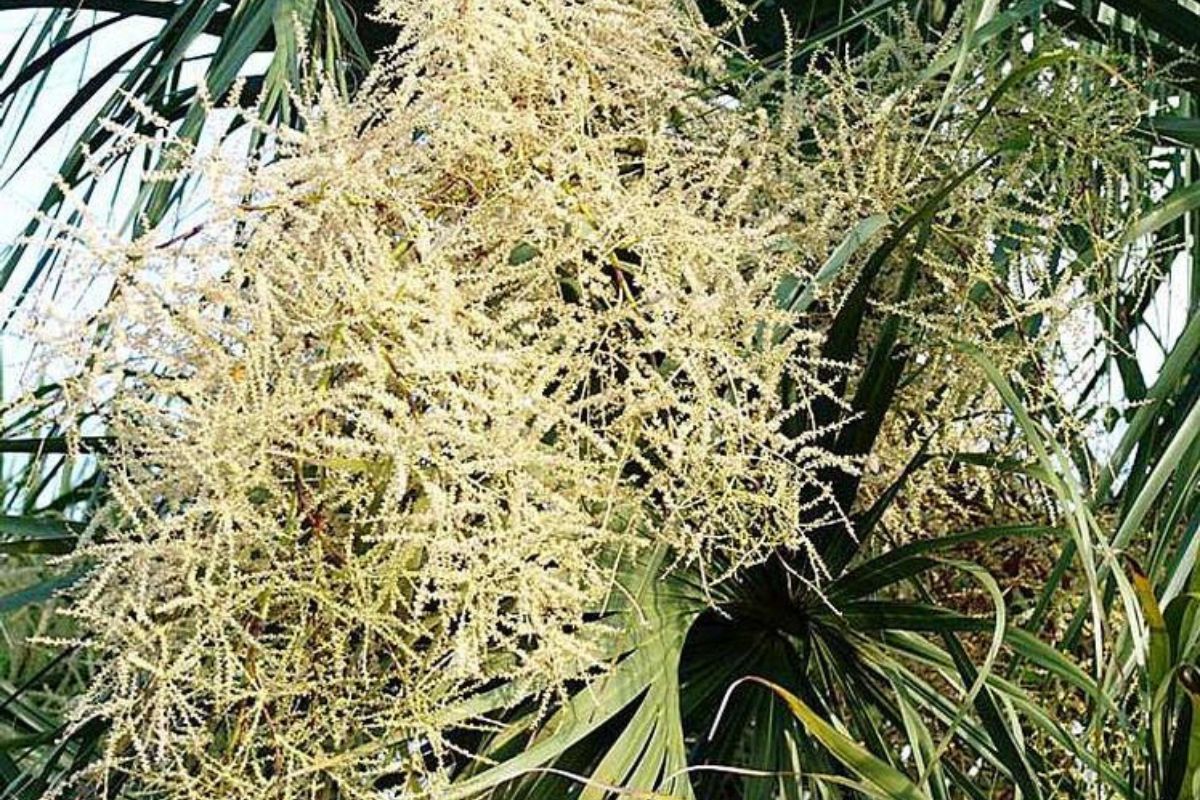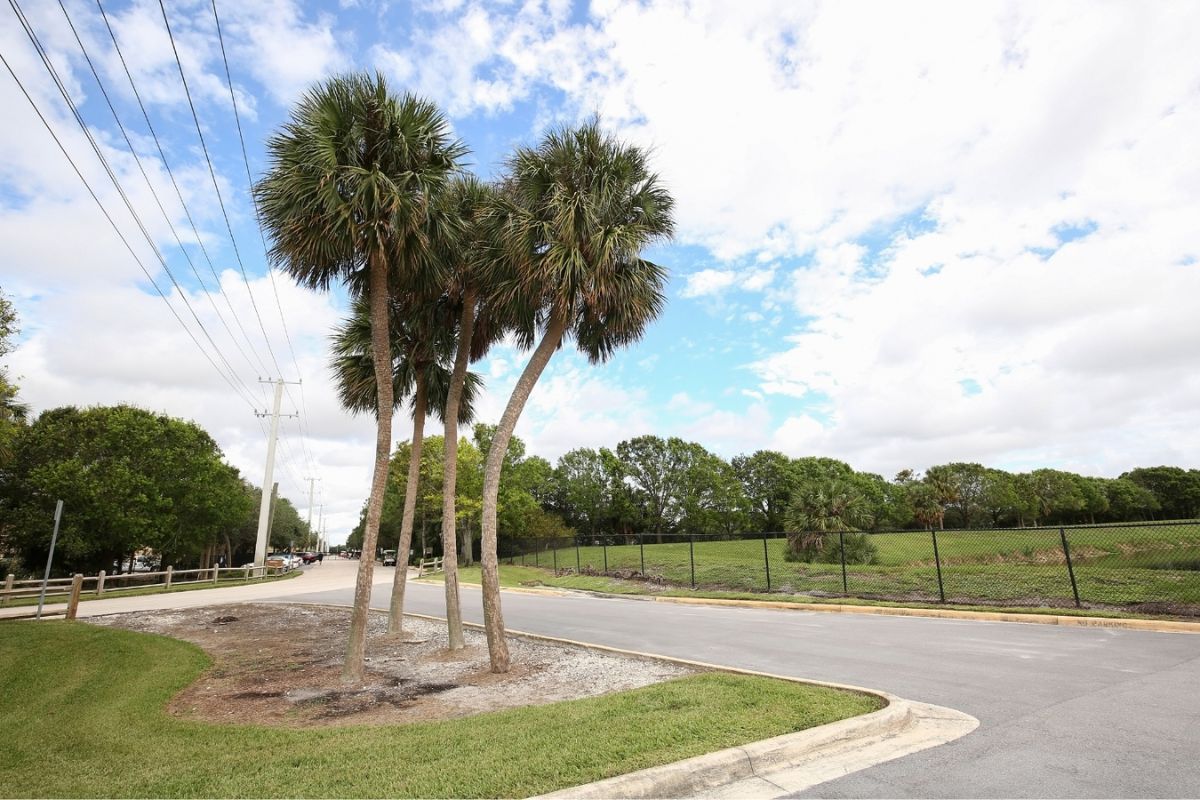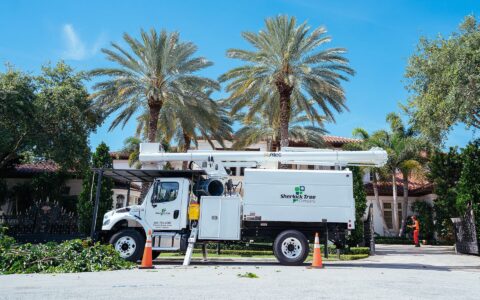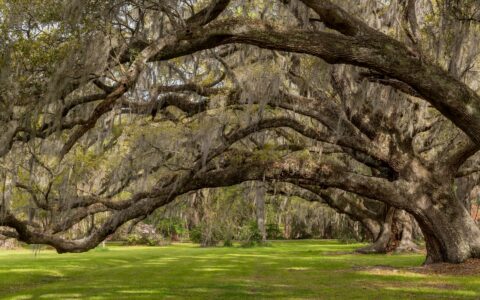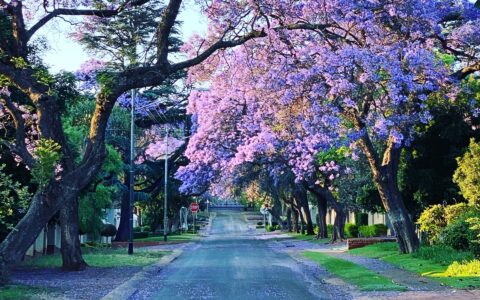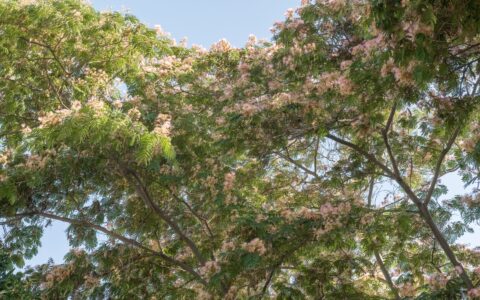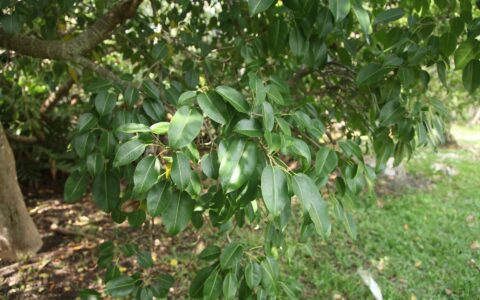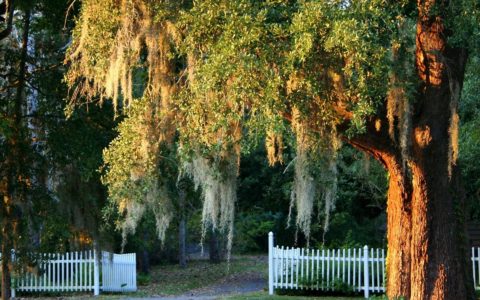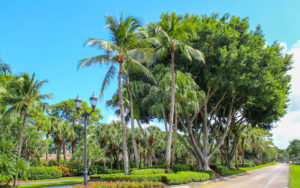If you’ve spent any time in South Florida, you’ve likely admired the graceful sabal palm swaying in our warm breezes. As local tree care experts serving Broward, Palm Beach, and Miami-Dade County, we’re often asked about these iconic symbols of our state. But here’s something that might surprise you – the sabal palm isn’t actually a tree at all!
Key Takeaways:
- Sabal palms are one of the oldest palm species on Earth, dating back 85 million years, and are uniquely adapted to Florida’s challenging climate.
- Unlike typical trees, sabal palms lack bark and are made up of tightly packed fibers, making them more closely related to grasses, corn, and orchids.
- These resilient palms are hurricane-resistant, drought-tolerant, and thrive in poor, sandy soils, making them ideal for Florida landscapes.
- Sabal palms produce up to 50,000 flowers and berries that feed wildlife like birds, raccoons, and bats, making them an important part of Florida’s ecosystem.
- With proper care, including regular inspections, proper nutrition, and protection from damage, your sabal palms can live for over 100 years and remain a stunning feature in your landscape.
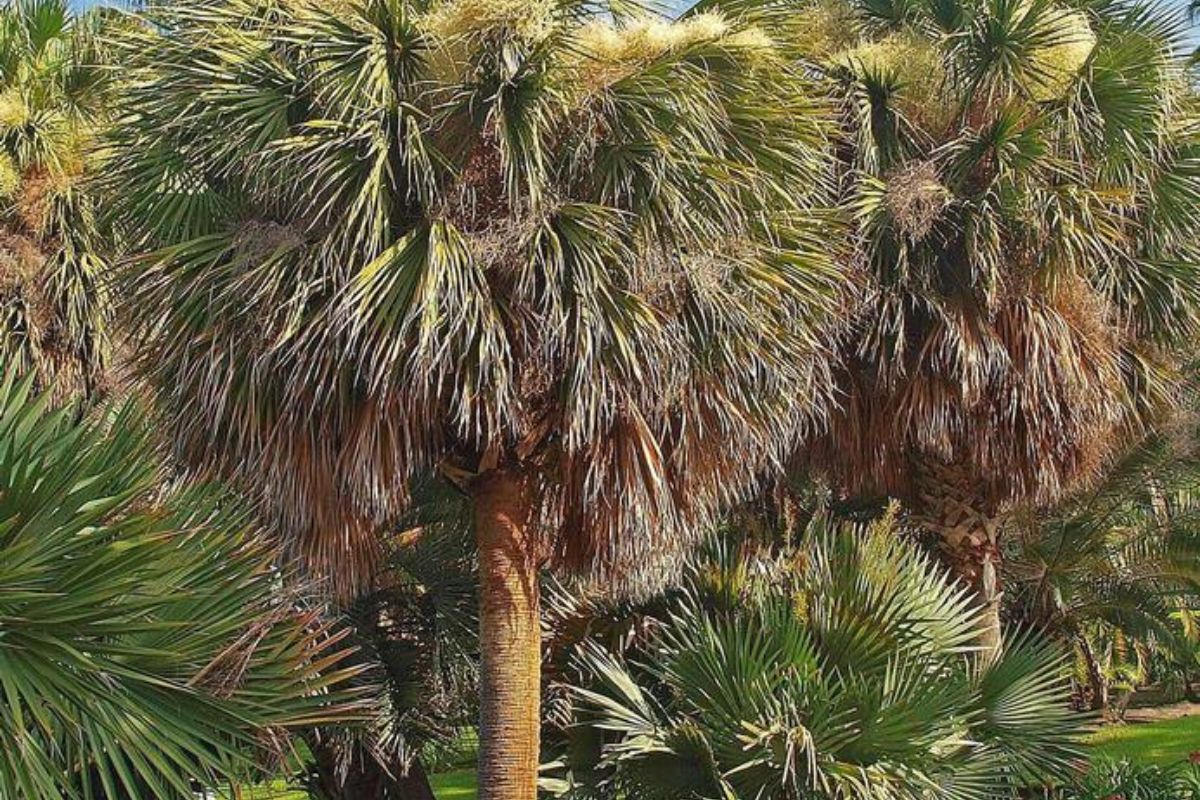
Patti Anderson, Identifying Commonly Cultivated Palms, USDA APHIS PPQ, Bugwood.org
What Makes the Sabal Palm So Unique
The sabal palm (Sabal palmetto) stands as one of Florida’s most remarkable natural treasures and has held the title of the state tree since 1953. While you might spot these iconic palms throughout our state, there’s much more to these amazing plants than meets the eye.
An Ancient Florida Native
If trees could talk, sabal palms would have quite a story to tell. Their family line stretches back about 100-120 million years ago, with the sabal palm species emerging around 85 million years ago. That means these palms were already thriving when dinosaurs roamed! Today, they stand as one of the oldest palm species still growing on Earth.
Not Your Average Tree
Sabal palms belong to a special group of plants called monocotyledons (monocots for short), making them more closely related to grasses, corn, and even orchids than oak or maple trees.
What makes them so different? Well, most trees build their trunks by adding rings of wood each year and have a protective bark layer. On the other hand, sabal palms have trunks made of thousands of tightly packed fibers, wrapped in a distinctive covering created by old frond bases.
Built Florida Tough
These palms are perfectly adapted to Florida’s challenging climate. When hurricanes blow through, sabal palms show their true resilience. Their flexible trunks can bend and sway in strong winds without breaking, while their sturdy root system keeps them firmly anchored. This natural toughness, combined with their resistance to salt spray and drought, helps them live for nearly 100 years on average when growing in good conditions.
A Feast for Florida Wildlife
Each sabal palm serves as a small ecosystem. Their flower stalks burst with life, producing up to 50,000 delicate cream-colored blooms at a time. These flowers develop into black berries that become an excellent food source for Florida’s wildlife, including mockingbirds, robins, raccoons, and even bats.
How the “Cabbage Palm” Got Its Name
The sabal palm earned its nickname, “cabbage palm,” thanks to the terminal bud at the top of the tree, which is shaped (and even tastes) like a cabbage head. This bud, also called the “heart” of the palm, was a staple food for Florida’s Native American populations, who relied on its nutritional value and accessibility.
Today, heart of palm is a popular ingredient in trendy salads and gourmet dishes, but it’s important to note that harvesting it from sabal palms is not sustainable. The terminal bud is the tree’s only growing point and removing it will kill the entire palm. Fortunately, the heart of palm you find in stores typically comes from other palm species grown specifically for harvesting, so you can enjoy this delicacy guilt-free without harming Florida’s iconic state tree.
Growing Conditions for Sabal Palms in South Florida
Sabal palms thrive so well in South Florida landscapes because of their adaptation to local conditions. These hardy plants handle just about everything Mother Nature throws at them, including:
- Extreme Weather: Sabal palms can withstand strong winds, including those from hurricanes, making them a resilient choice for storm-prone areas.
- Poor Soil: They thrive in sandy or nutrient-poor soils that might challenge other plants if there’s adequate drainage.
- Drought: Once established, sabal palms are highly drought-tolerant, requiring minimal watering to stay healthy.
- Salt Tolerance: They handle salty air and soil near coastal areas exceptionally well, making them a staple in seaside landscapes.
- Heat and Humidity: These palms flourish in South Florida’s hot, humid climate, thriving even in the most sweltering summer conditions.
How to Best Care for Your Sabal Palm
When properly planted and cared for, sabal palms can reach heights of over 80 feet with trunks up to 25 inches in diameter. Despite their resilience, sabal palms face threats requiring attention to ensure their health and longevity.
Watch for Pest Problems
Insects like palmetto weevils and scales can cause damage if left unchecked. Regular inspection helps catch problems early, so be on the lookout for:
- Unusual spots or discoloration on fronds
- Visible insects or scales on the trunk
- Damage to new growth
- Signs of boring or tunneling
Prevent Fungal Disease
Ganoderma butt rot is one of the most serious threats to sabal palms. Prevention is crucial because there’s no cure once infected. Some important prevention strategies include:
- Avoiding trunk injuries
- Ensuring proper soil drainage
- Maintaining appropriate watering practices
- Removing infected palms to protect others nearby
Provide Proper Nutrition
Although sabal palms can handle sandy soils like champs, it doesn’t always mean they get everything they need to thrive. Sandy soil often lacks essential nutrients, which can leave your palm struggling over time. Yellowing or browning fronds often indicate nutrient deficiencies, particularly:
- Potassium (K): A potassium deficiency is the most common, causing frond tip browning.
- Magnesium (Mg): A magnesium deficiency resulting in yellow bands along the fronds.
- Manganese (Mn): A manganese deficiency is normally responsible for creating frond burning and death of new growth.
A slow-release palm fertilizer applied twice yearly typically provides adequate nutrition. Look for fertilizers with micronutrients specifically formulated for palms.
Water Correctly
A sabal palm’s natural drought tolerance makes them a great low-maintenance choice, but that doesn’t mean they don’t need some care – especially when it comes to watering. Providing the right amount of water at the right time keeps your palm healthy and thriving.
Here’s how to do it right:
- Water Deeply, Not Often: Give your palm a thorough soaking, but space out watering to encourage deep root growth. Avoid overwatering, which can lead to root rot and other problems.
- Check Drainage: Make sure the soil drains well to prevent water from pooling around the roots. Poor drainage can suffocate the roots and create the perfect environment for disease.
- Water During Dry Spells: Once established, sabal palms don’t need frequent watering, but during extended dry periods or drought, give them a boost to keep them hydrated.
- Pay Extra Attention to New Palms: Newly planted palms need regular watering until their roots are well-established, which can take up to a year.
Protect from Physical Damage
In urban and suburban landscapes, sabal palms often face mechanical damage from landscaping tools and other human activities. To help protect your sabal palm:
- Use a Mulch Ring: Spread a ring of mulch around the base of the trunk to keep mowers and trimmers at a safe distance.
- Keep Tools Away: Avoid using string trimmers near the trunk, as they can cause harmful cuts.
- Let Wounds Heal Naturally: If the trunk gets damaged, don’t paint or seal the wound. Sabal palms heal best when left to recover naturally.
Trust Sherlock Tree to Keep Your Sabal Palms Looking Their Best
The sabal palm truly is the perfect state tree for Florida. These remarkable plants embody the resilient spirit of our state while providing beauty, shade, and wildlife habitat for our landscapes. With proper care and maintenance, your sabal palms can be a stunning addition to your property for generations.
Need expert help caring for your sabal palms? Our ISA Certified Arborists at Sherlock Tree understand the unique needs of South Florida’s palms. Call us today at 954-788-4000 to schedule a consultation or request an estimate online.
Call Sherlock for quality tree services
Whether you're looking for specific tree care services, such as palm trimming, tree removal, or disease treatments, or would like one of our Arborists to examine your trees to identify any issues and recommend options, we're always here for you! Just give us a call at 954-788-4000 to set up an appointment.
SEE MORE ARTICLES
Looking for more?
We've got you covered with a monthly newsletter full of tips, resources, updates, how-to's, and other helpful information about trees and landscapes in South Florida!

